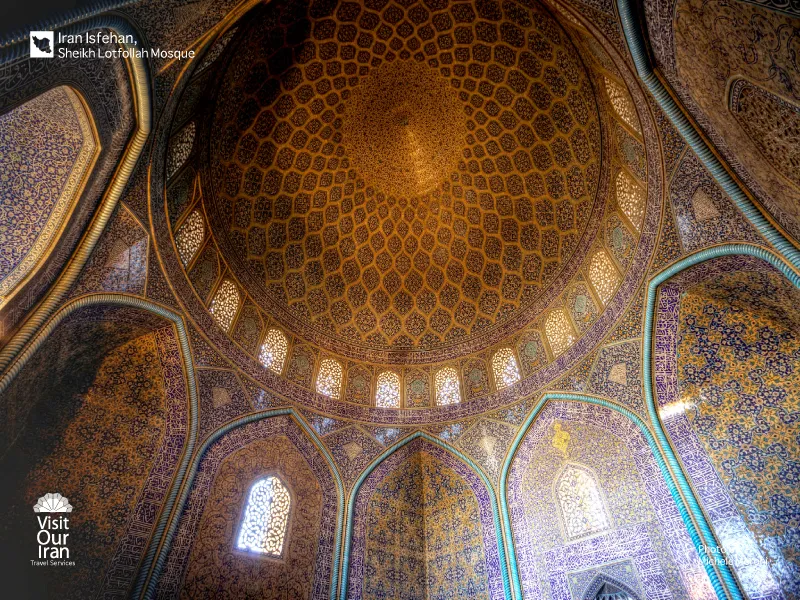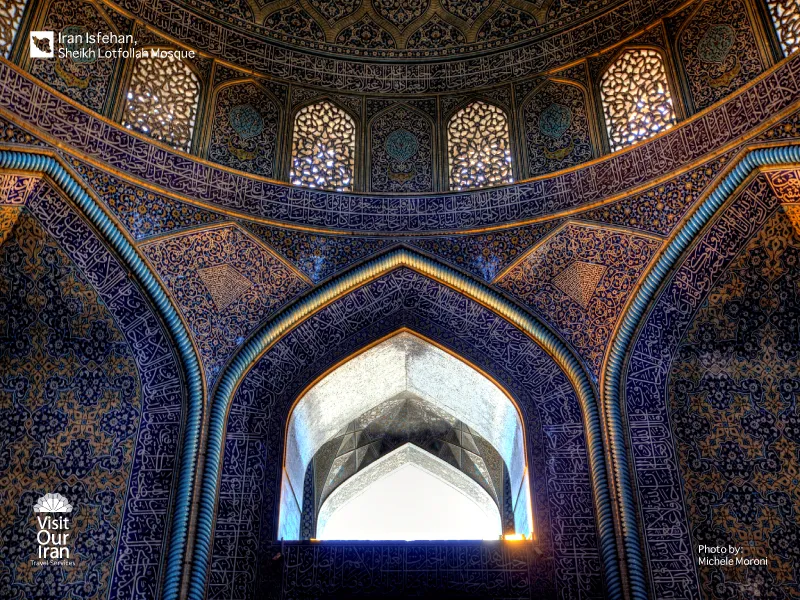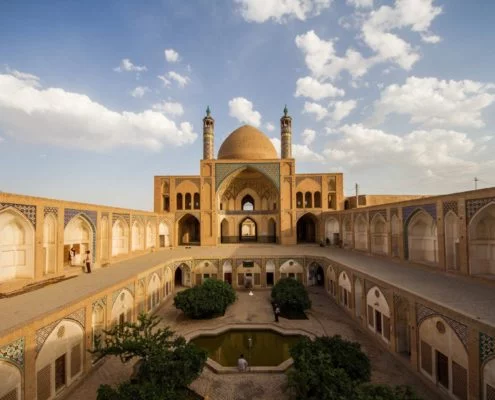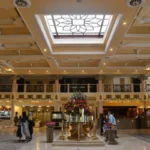Iran’s history is one of the oldest and most fascinating in the world, with its roots stretching back thousands of years. The pre-Islamic period, in particular, is marked by the rise of powerful empires, the creation of remarkable cultural and architectural achievements, and the shaping of a diverse and rich heritage. Understanding this ancient history will enhance your experience when visiting Iran, as it gives you a deeper appreciation of the landmarks and traditions you encounter. From the early civilizations like the Elamites to the mighty Persian Empires, the story of Iran before the arrival of Islam is one of innovation, conquest, and lasting influence that continues to shape the country today. Let’s journey through this remarkable era and uncover the key moments that define Iran’s pre-Islamic legacy.

Iranian History: Pre-Islamic Times
If you’re planning to visit Iran, understanding its rich history will make your trip even more fascinating. Iran’s history is one of the oldest in the world, with civilizations dating back thousands of years. The pre-Islamic period, in particular, is a time of great empires, cultural achievements, and fascinating stories. Let’s dive into this era and explore the key moments that shaped Iran before the arrival of Islam.
1. The Land and Its People
Iran’s geography played a huge role in shaping its history. The country is mostly made up of mountains, deserts, and fertile valleys. These natural features influenced how people lived, traded, and defended themselves. In ancient times, the land was home to various tribes and cultures, some of which eventually formed powerful empires.
The earliest known civilization in Iran was the Elamites, who lived in the southwestern region around 3500 BCE. They were skilled in art, architecture, and trade, and their influence extended to neighboring Mesopotamia (modern-day Iraq). The Elamites built impressive structures, like the ziggurat at Chogha Zanbil, which you can still visit today.
2. The Arrival of the Aryans
Around 1500 BCE, a group of people known as the Aryans migrated to Iran from Central Asia. They brought with them their language, culture, and religion, which would later evolve into Zoroastrianism, one of the world’s oldest monotheistic religions. The Aryans split into two groups: one settled in Iran, while the other moved to India. This shared heritage is why Persian and Indian cultures have so many similarities.
The Aryans were skilled horsemen and warriors, and they gradually established themselves as the dominant group in Iran. They formed tribes, such as the Medes and the Persians, who would go on to create some of the most powerful empires in history.
3. The Median Empire (678–550 BCE)
The Medes were the first Iranian tribe to form a unified kingdom. Their capital was Ecbatana (modern-day Hamadan), and they ruled over much of western Iran. The Medes are famous for their role in defeating the Assyrian Empire, a brutal power that had dominated the region for centuries. In 612 BCE, the Medes, along with their allies, the Babylonians, destroyed the Assyrian capital of Nineveh, marking the end of Assyrian rule.
The Medes laid the foundation for the Persian Empire, but their own empire didn’t last long. In 550 BCE, they were conquered by Cyrus the Great, a Persian king who would change the course of history.

4. The Achaemenid Empire (550–330 BCE)
The Achaemenid Empire, founded by Cyrus the Great, was one of the largest and most powerful empires in history. At its peak, it stretched from Egypt and Greece in the west to India in the east. Cyrus was a remarkable leader, known for his tolerance and respect for the cultures and religions of the people he conquered. He allowed the Jews to return to Jerusalem and rebuild their temple, an act that earned him a place in the Bible.
Cyrus’s successors, like Darius the Great and Xerxes, expanded the empire and built magnificent cities, such as Persepolis. The ruins of Persepolis, near Shiraz, are a must-see for any visitor to Iran. The empire was also known for its efficient administration, with a network of roads (like the Royal Road) that connected its vast territories.
However, the Achaemenid Empire eventually fell to Alexander the Great in 330 BCE. Alexander’s conquest marked the beginning of the Hellenistic period, during which Greek culture spread across Iran.
Don’t forget to discover the fascinating history of Persepolis, the grand capital of the Achaemenid Empire, and uncover its stunning architecture and rich cultural heritage. Read this article to learn why this ancient site, also known as Takht-e Jamshid, remains one of Iran’s most iconic landmarks!
5. The Parthian Empire (247 BCE–224 CE)
After Alexander’s death, his empire was divided, and Iran came under the control of the Seleucid Empire. However, the Seleucids faced resistance from local Iranian tribes, particularly the Parthians. The Parthians, led by Arsaces I, established their own empire in 247 BCE.
The Parthians were skilled horsemen and archers, and they successfully defended their empire against the Roman Empire for centuries. One of their most famous victories was at the Battle of Carrhae in 53 BCE, where they defeated a Roman army led by Crassus. The Parthians were also great traders, and their empire played a key role in the Silk Road, the ancient trade route that connected China to the Mediterranean.
6. The Sasanian Empire (224–651 CE)
The Sasanian Empire was the last great Persian empire before the Islamic conquest. It was founded by Ardashir I in 224 CE, after he defeated the last Parthian king. The Sasanians saw themselves as the heirs of the Achaemenids and worked to revive Persian culture and traditions.
The Sasanian Empire was a time of great artistic and architectural achievements. They built impressive palaces, like Ctesiphon (near modern-day Baghdad), and their art influenced cultures as far away as China and Europe. The empire was also a center of learning, with scholars preserving and translating ancient texts.
However, the Sasanians faced constant pressure from the Byzantine Empire in the west and nomadic tribes in the east. In 651 CE, the empire fell to the Arab Muslims, marking the end of the pre-Islamic era in Iran.
7. Religion in Pre-Islamic Iran
Before Islam, the dominant religion in Iran was Zoroastrianism, which was founded by the prophet Zoroaster (or Zarathustra). Zoroastrianism taught that there was one supreme god, Ahura Mazda, and that the world was a battleground between good and evil. The religion had a profound influence on Iranian culture and even on other religions, like Judaism, Christianity, and Islam.
Zoroastrianism was the state religion of the Sasanian Empire, and its priests, known as mobads, held significant power. However, other religions, like Christianity, Judaism, and Manichaeism, also existed in Iran during this time.
8. Legacy of Pre-Islamic Iran
The pre-Islamic period left a lasting legacy on Iran. The empires of this era, particularly the Achaemenids and Sasanians, shaped Iranian identity and culture. Many of Iran’s most famous historical sites, like Persepolis, Naqsh-e Rustam, and Taq-e Bostan, date from this time.
The Persian language, art, and architecture also have their roots in this period. Even after the Islamic conquest, many pre-Islamic traditions and customs survived, blending with the new culture to create the unique Iranian identity we see today.
The Rise of Islam and Its Impact on Iran
Iran’s history during the Islamic period also has significantly shaped its present-day culture and identity. As an international tourist, understanding this era will enhance your appreciation of Iran’s diverse heritage and the historical contexts of its many landmarks.

1. The Advent of Islam and the Arab Conquest
In the 7th century, Arab Muslim armies began their expansion into Persian territories, culminating in the conquest of the Sasanian Empire by 651 CE. This period marked a significant transformation, as Islam gradually became the dominant religion. The process of conversion was complex and varied across regions, with many Persians initially retaining their Zoroastrian faith before gradually embracing Islam over subsequent centuries. This era also saw the introduction of new administrative systems and cultural exchanges that would profoundly influence Persian society.
2. Emergence of Local Dynasties
Following the initial Arab rule, several local dynasties emerged, asserting Persian autonomy and revitalizing indigenous culture. The Tahirids, Saffarids, and Samanids were among the prominent dynasties that fostered a renaissance of Persian art, literature, and science. Notably, the Samanid dynasty (819–999 CE) is celebrated for its patronage of Persian literature and culture, leading to a resurgence of the Persian language in official and literary contexts. This period laid the foundation for a distinct Persian-Islamic identity that continues to influence Iran today.
3. Turkic and Mongol Invasions
The 11th and 13th centuries brought significant upheavals with the arrival of Turkic and Mongol invaders. The Seljuk Turks established a vast empire, introducing new cultural elements and administrative practices. Their rule was characterized by a synthesis of Persian and Turkic traditions, which enriched the cultural tapestry of the region. The subsequent Mongol invasion, led by Genghis Khan and his successors, resulted in widespread devastation. However, over time, the Mongol rulers, particularly under the Ilkhanate, adopted Islam and embraced Persian culture, leading to a period of reconstruction and cultural flourishing. This era underscores the resilience of Persian society and its ability to assimilate and influence diverse cultures.

We suggest you also read The Path of Persian Mysticism to discover the deep spiritual traditions that have influenced Iranian culture for centuries. This article takes you through the history, philosophy, and key figures of Persian mysticism, offering a deeper understanding of its impact on art, poetry, and daily life.
4. The Safavid Dynasty and the Establishment of Shi’a Islam
The rise of the Safavid dynasty in the early 16th century marked a pivotal chapter in Iran’s history. Under Shah Ismail I, the Safavids established Twelver Shi’a Islam as the state religion, distinguishing Iran from its Sunni neighbors. This religious transformation was accompanied by efforts to consolidate national identity and centralize authority. The reign of Shah Abbas I (1588–1629) is particularly notable for significant developments in architecture, trade, and the arts. The city of Isfahan, with its stunning mosques and palaces, flourished during this time and remains a testament to Safavid architectural brilliance. Visiting Isfahan offers a tangible connection to this transformative period in Iran’s history.
5. Westernization Efforts and the Pahlavi Era
The early 20th century introduced a wave of modernization under Reza Shah Pahlavi, who sought to secularize and Westernize Iran. His policies aimed at reducing the influence of religious institutions, modernizing infrastructure, and promoting education. While these reforms led to significant societal changes, they also generated tensions between traditional and modernist elements within Iranian society. Understanding this period provides context for Iran’s contemporary social and political dynamics.

The Islamic Revolution and the Establishment of the Islamic Republic
Dissatisfaction with rapid modernization, Western influence, and autocratic governance culminated in the Islamic Revolution of 1979. Led by Ayatollah Khomeini, this movement resulted in the overthrow of the Pahlavi monarchy and the establishment of the Islamic Republic of Iran. This revolution profoundly reshaped Iran’s political landscape, emphasizing Islamic principles in governance and society. The effects of this transformation are evident in Iran’s contemporary cultural and political environment, offering visitors insight into the nation’s recent history and its ongoing evolution.
By exploring these pivotal periods, you gain a comprehensive understanding of Iran’s rich history during the Islamic era. This knowledge enriches your travel experience, allowing you to appreciate the depth and diversity of Iran’s cultural heritage as you encounter its historical sites and engage with its people.

